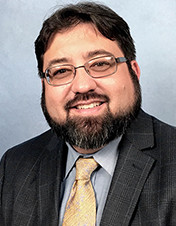During recent travels for accreditation to our schools in Saipan, Yap, and Palau, I was reminded that engagement starts with a conscious effort to go beyond our comfort zone and encounter our community.
A school doesn’t impact its community until it knows and is known by the community it hopes to reach. Our visit always began with a stop at customs where we were asked, “What is the purpose of your visit?” As soon as the name Seventh-day Adventist was mentioned it caused an immediate positive reaction. “You’re part of SDA!? Very good. Please take your luggage and go. Thank you!” This would usually be followed by an invitation to shake hands with someone working at the airport who graduated or has children at the school.
I have visited some of our schools on the mainland where I have had similar conversations, but it is not as common to be greeted by the community with this same enthusiasm. When it has happened it’s for similar reasons. The schools have become centers of influence in their community. They regularly engage with their community and are recognized for the positive contribution they make. They have found a way to exhibit the spirit of influence that Ellen White writes about in Chapter 1 of her book Education. (Here’s another opportunity to re-read that chapter!)
That type of engagement always requires us to go beyond our comfort zone, to reach beyond the walls of our classrooms and church to encounter individuals in the community. “Real education must be education of the whole community, and it must take hold of the life which the people live, making them more intelligent about this life” (Sutherland, 2015).
The teachers, administrators, and missionaries I spent time with this January understood this discomfort inherent in new encounters. And yet, they still chose to work and serve. They recognize the potential that they represent by spending time in and with the community. Even when this meant they would interact with parents and students who didn’t believe, eat, or live as they did. Check out this article from our school in Yap for a deeper story.


1 comments
Le doy gracias a Dios por que existe la Educación Adventista.